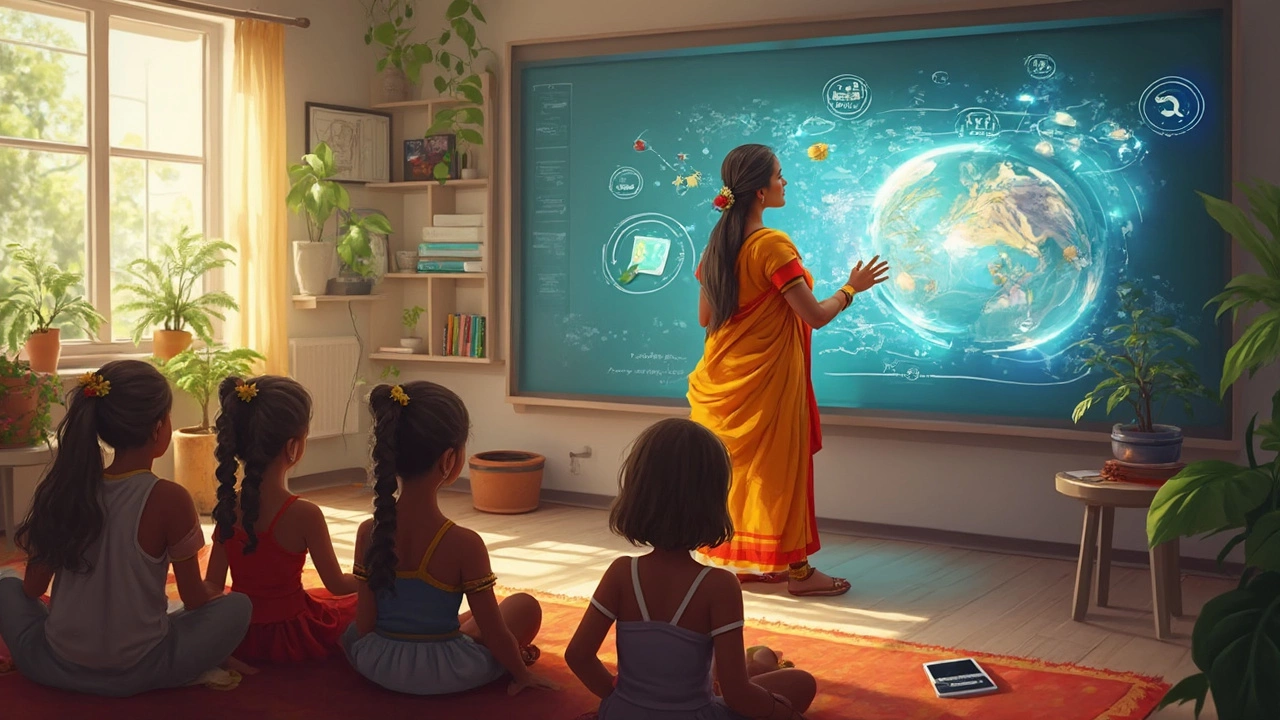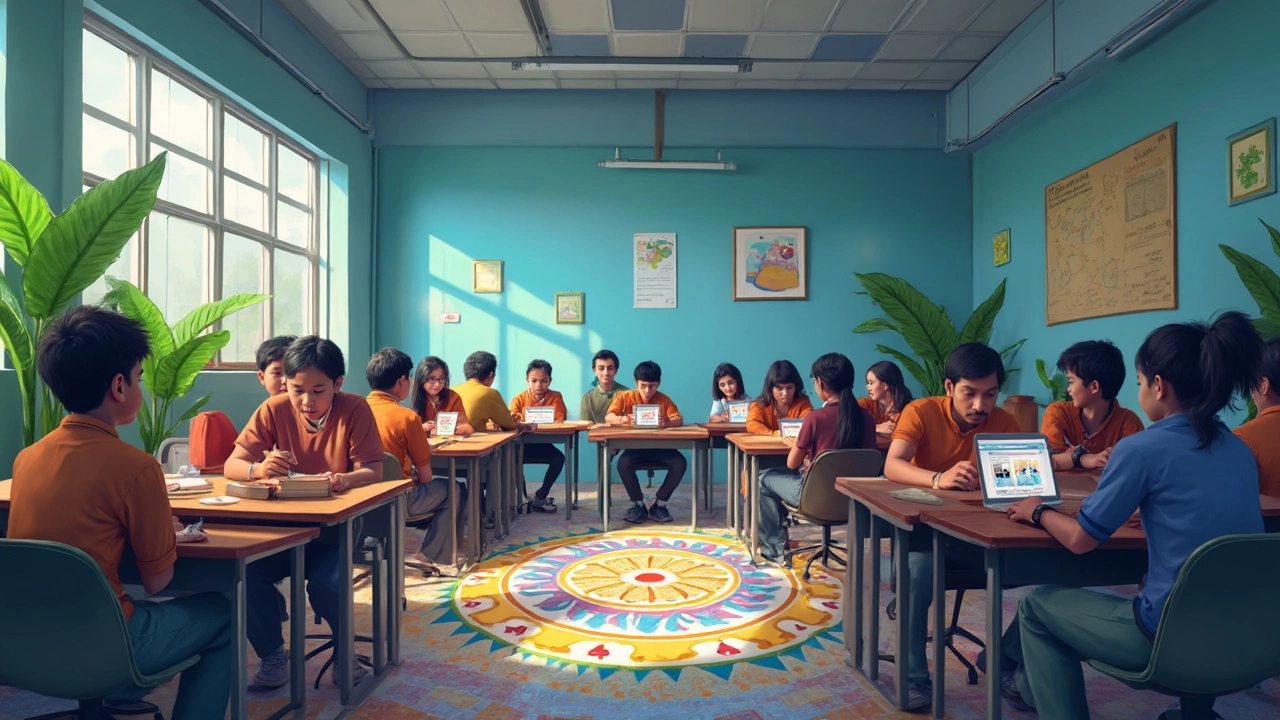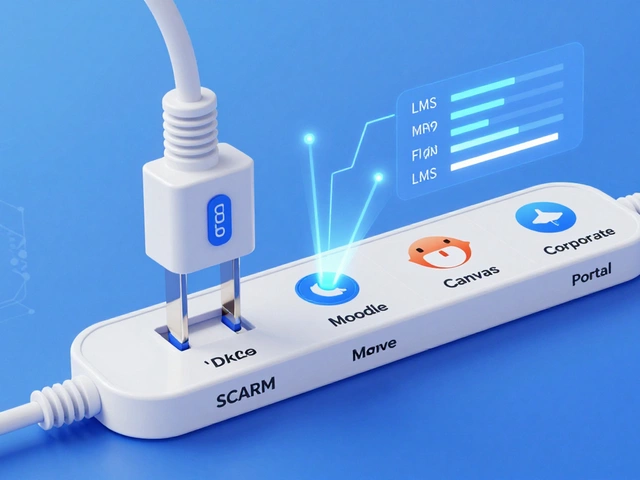You've been in Google Classroom for a while now, but lately, you might have noticed it's a bit harder to just 'leave' when you’re done. What's going on? Well, Google Classroom, like many e-learning platforms, has evolved over the years. During the pandemic, it became clear that virtual classrooms were here to stay. As a result, these platforms are becoming more cohesive parts of our educational journeys, making them a bit more 'sticky,' as the tech folks say. It's not just about convenience anymore; it's about creating a continuous learning experience.
But why can't you just exit the class like before? Schools and educators are leaning on these platforms to maintain engagement and consistency. That might mean there are settings now to prevent leaving a class prematurely or limitations on how users can opt out of notifications and assignments. It's about keeping everyone on the same page, quite literally!
This shift impacts not only students who may feel tethered to ongoing assignments but also teachers juggling multiple classes. It's like our digital classrooms have become a second home – without the 'forgetting your homework' excuse!
So, what are some tips to handle this new normal? Think of ways you can manage notifications and organize your virtual workspace to make things feel less overwhelming. We’ll explore more tips and tricks to tame your Google Classroom in the sections to follow.
- The Evolution of Google Classroom
- Why Leaving Isn't as Easy as Before
- The Impact on Students and Teachers
- Tips for Navigating Digital Classrooms
The Evolution of Google Classroom
Google Classroom first jumped onto the scene in 2014, making life a lot easier for teachers and students. Back then, it wasn't as fancy, but it did the job—organizing assignments, sharing documents, and simplifying communication. Schools loved it because it synced so smoothly with other Google apps.
Fast forward to today, and Google Classroom isn't just a handy tool—it's a backbone for many schools, especially after the massive shift to online learning. You might be wondering, what exactly changed? Well, Google started adding a bunch of features that made it a whole lot more than just a place to submit homework.
From Basic Tasks to Immersive Learning
Initially, Google Classroom was all about the basics—create, distribute, and grade assignments. Over time, it evolved to cater to the diverse needs of both educators and learners. We now have integration capabilities with a slew of e-learning platforms, interactive tools, and even enhanced reporting features. All of this transformation aimed to promote an engaging and interactive learning atmosphere, no matter where you're logging in from.
"Google Classroom has become an essential hub for learning because it allows for seamless integration with educational tools," says Dr. Michelle Harris, an EdTech expert.
Impact of the Pandemic
The COVID-19 pandemic threw many schools headfirst into remote learning, and Google Classroom picked up the pace. They beefed up their servers and added new features to keep up with the rising demand. According to Google's 2021 reports, the usage skyrocketed, showing a 150% increase in the number of educators and students using the platform.
New add-ons and features like breakout rooms, improved grading systems, and peer collaboration tools were rolled out to address challenges educators and students faced during virtual learning. These advancements transformed Google Classroom into a full-fledged learning management system.
In conclusion, online education isn't going anywhere, and Google Classroom's evolution shows how platforms are growing to meet new education needs. It's a safe bet we'll see more updates as schooling continues to embrace the digital world.
Why Leaving Isn't as Easy as Before
Ever tried to exit a Google Classroom recently? It’s not as straightforward as it once was. Schools have recognized the power of digital learning, especially with platforms like Google Classroom, and they're making adjustments to keep things running smoothly. But what’s actually changed?
Evolving Needs of Educational Institutions
Institutions are now focusing on creating a seamless, continuous learning experience. They need students to stay connected throughout the term for consistency and engagement. This means tweaking permissions so students can’t just leave a class whenever they please—it’s about fostering a cohesive learning environment.
Technical Settings and Policies
There are some backend settings at play too. Admins may set classes to auto-enroll students or lock classes to prevent accidental (or purposeful) exits. These technical settings ensure that everyone remains in the loop and no one misses out on important updates or assignments.
The Integration of Features
Features like Google Meet are tightly integrated with the classroom now. This integration means you can't just 'leave' if you’re still part of an ongoing course discussion or meeting scheduled within the platform. It's designed to keep users engaged and help maintain a real-time school experience, even from a distance.
Feedback from Educators and Students
Interestingly, feedback from users has also played a role. Many educators prefer this structure as it mirrors physical classroom management. Plus, students often benefit from having fewer distractions and more focus on their coursework this way.
Understanding these changes can help you navigate your e-learning platforms more efficiently. You might feel a little less in control, but it’s all geared towards making digital education work better for everyone involved.

The Impact on Students and Teachers
With platforms like Google Classroom becoming a staple, both students and teachers are experiencing shifts in how they handle their educational processes. For students, there's a blend of the good and the not-so-good. Sure, access to materials is easier, and organization boosts have made some students' lives simpler, but the expectation to be always 'on' and connected can be overwhelming.
For teachers, managing online education via these platforms means rethinking lesson plans. A survey from 2023 showed that 78% of teachers felt they spent more time preparing online materials compared to physical ones. Digital classrooms have introduced layers of tech support and online engagement that weren't part of the traditional classroom setup.
Student Experiences
One of the prominent shifts is the continuous flow of assignments and notifications. For some students, this is an anxiety trigger. They feel like there's no escape from schoolwork, leading to stress. John Randall, a student from Texas, mentioned,
"It's like being in school all day without a break. Notifications keep coming, and it feels never-ending."
Teacher Experiences
Teachers, on the other hand, face a different kind of pressure. While some appreciate the ability to track student progress more easily, others feel overwhelmed by the additional tech duties. They're expected to manage digital content, troubleshoot technical issues, and still ensure the educational content is engaging and effective.
Statistics on Classroom Engagement
According to a 2024 report on digital learning:
| Aspect | Percentage |
|---|---|
| Students feeling more organized | 65% |
| Teachers feeling tech overwhelm | 72% |
| Students experiencing increased stress | 55% |
These statistics highlight the dual-edged nature of e-learning platforms. They provide benefits but can also introduce unexpected challenges.
Figuring out how to handle these changes requires both students and teachers to set boundaries and embrace the flexibility these tools offer. It’s not just about coping, but thriving in this new learning environment.
Tips for Navigating Digital Classrooms
So you're finding yourself stuck in a Google Classroom loop and wondering how to manage it better? Don’t worry, we’ve got some handy tips to help you breeze through this digital adventure.
1. Organize Your Digital Space
It’s easy to get lost amidst a sea of assignments and notifications. Here’s a trick: keep your digital workspace tidy. Create folders within Google Drive for each subject or class. This will help you quickly locate what you need without wasting time.
2. Turn Off Non-Essential Notifications
Being notified every time there's a slight change can be overwhelming. Dive into the settings and customize your notifications. Focus on the crucial alerts and silence the rest to minimize distractions.
3. Use the Calendar Feature
Did you know that Google Classroom has a built-in calendar? Sync your class deadlines with Google Calendar to have all your due dates in one place. This way, you won't miss out on submitting assignments on time.
4. Communicate Effectively
Don't hesitate to use the platform’s communication tools to reach out to teachers or classmates. If something’s unclear, a quick message can save you hours of confusion later.
5. Utilize Available Resources
Many e-learning platforms come packed with tools like Google Meet for video calls or Google Docs for collaboration. Leverage these to enhance your learning experience.
Keep a Routine
Having a schedule helps maintain discipline. Set aside specific hours for attending to online education tasks just like you would for a regular class. This routine helps balance personal life and studies.
Sample Workflow Using Google Classroom Tools
| Task | Tool | Benefits |
|---|---|---|
| Submit Assignments | Google Drive | Centralized Location |
| Schedule Classes | Google Calendar | Reminders & Alerts |
| Collaborate on Projects | Google Docs | Real-time Edits |
Remember, digital classrooms can be just as effective as physical ones if managed well. With these tips, you’ll be more in control and less overwhelmed by your virtual learning environment!





